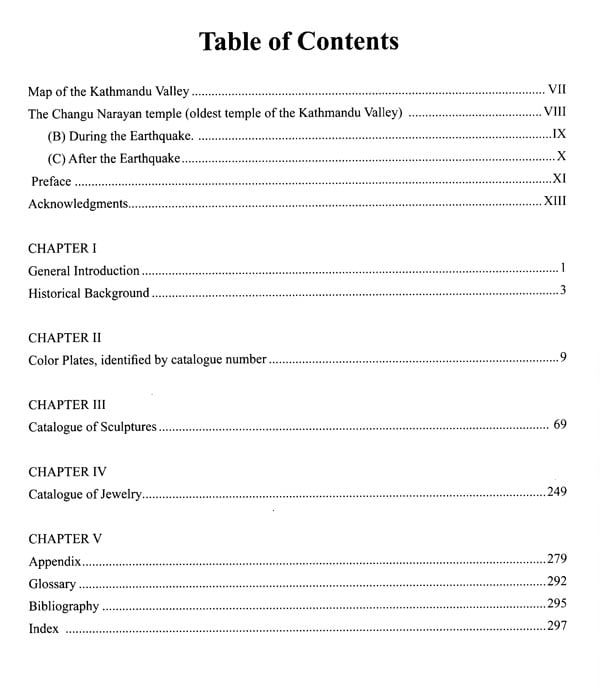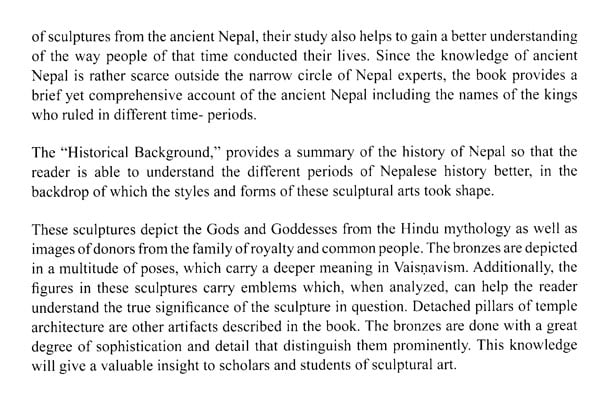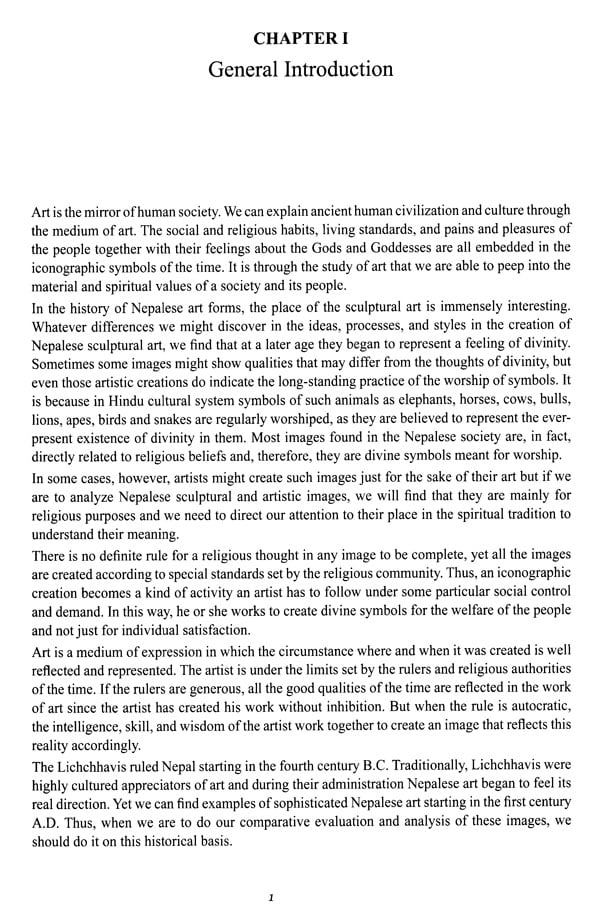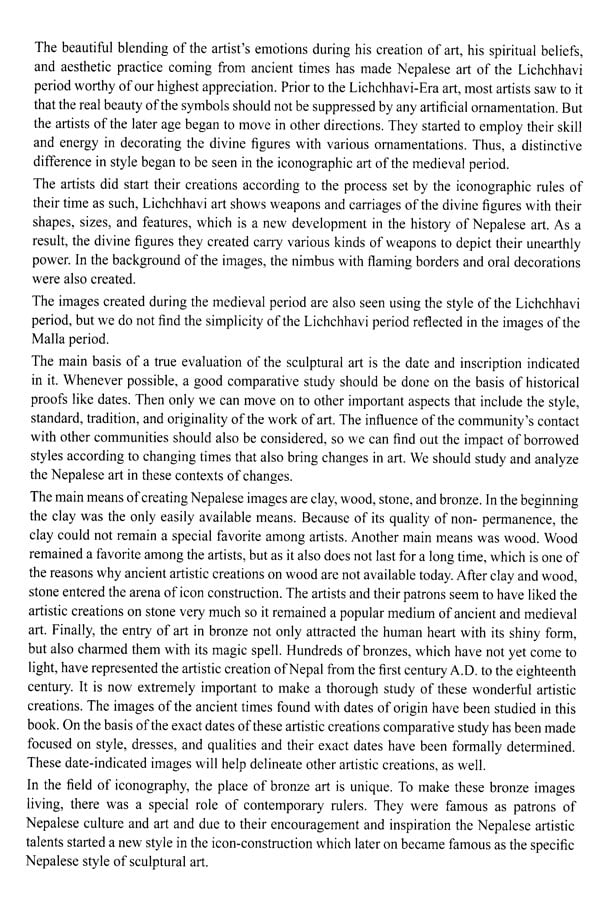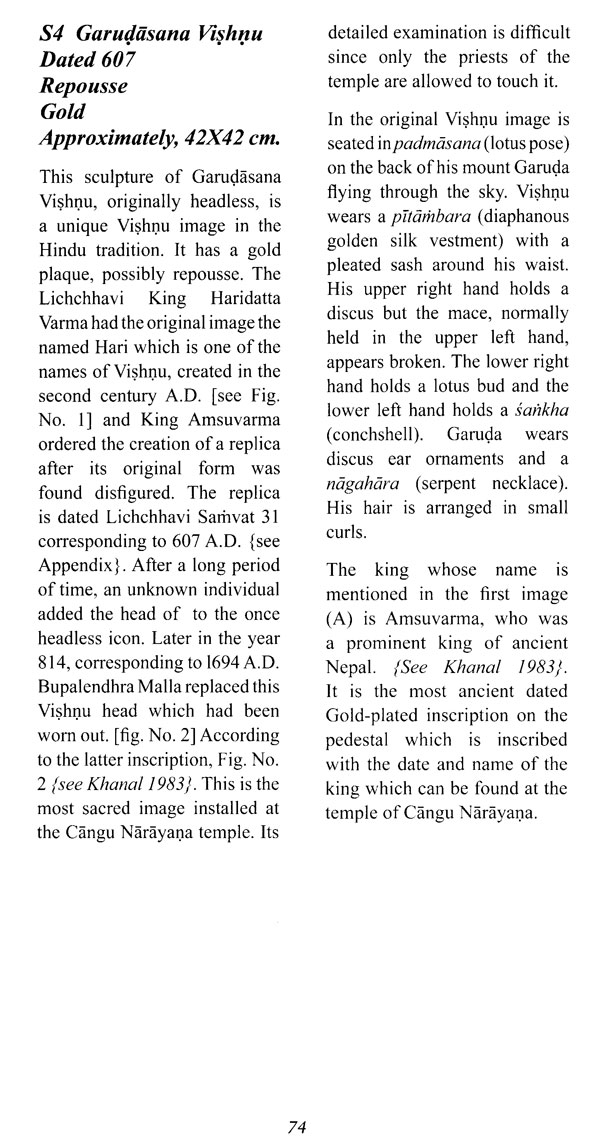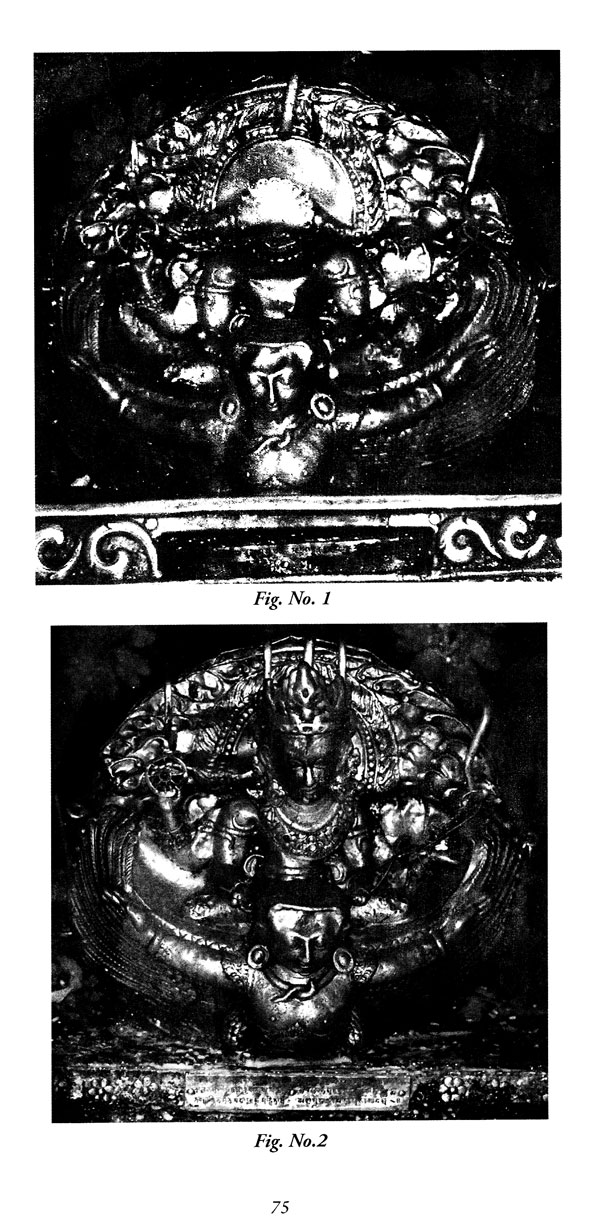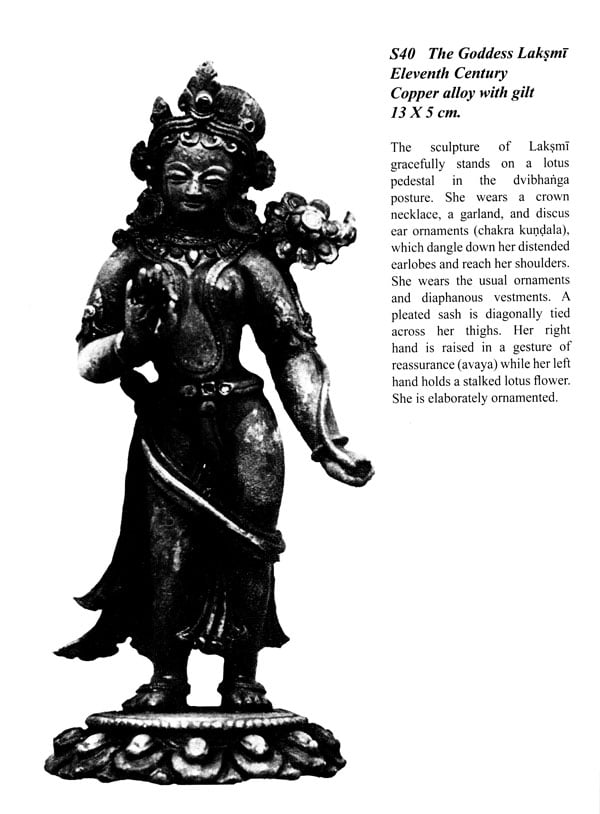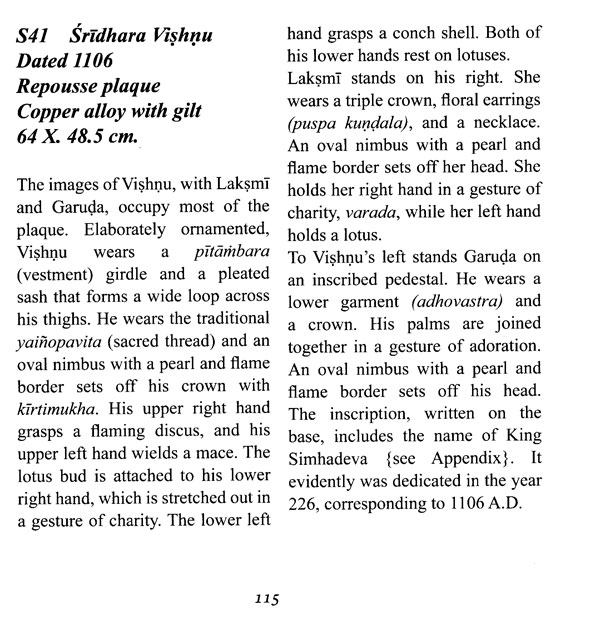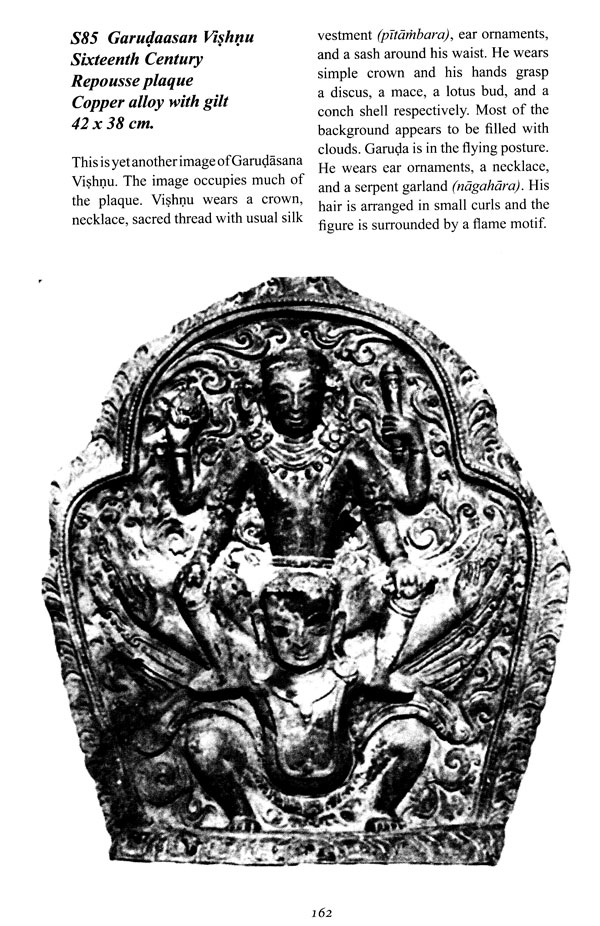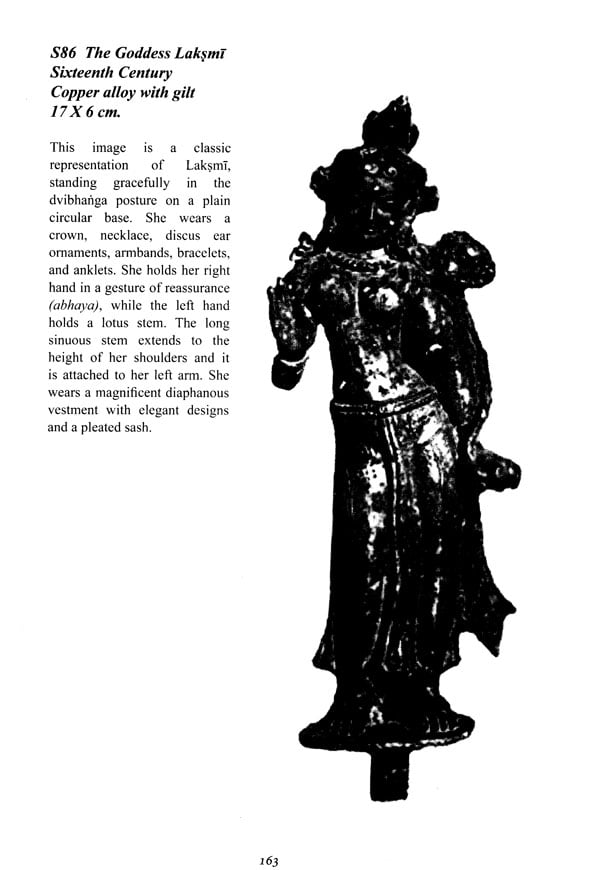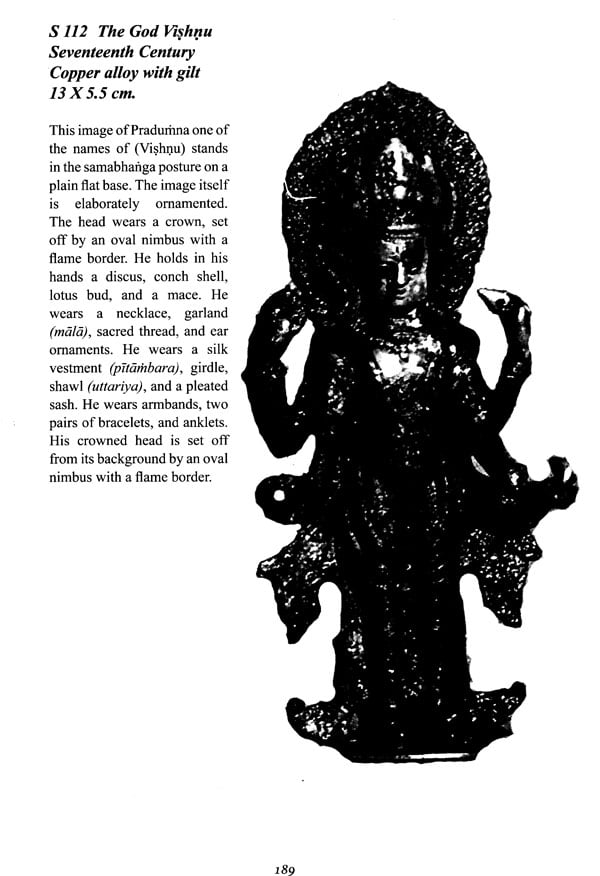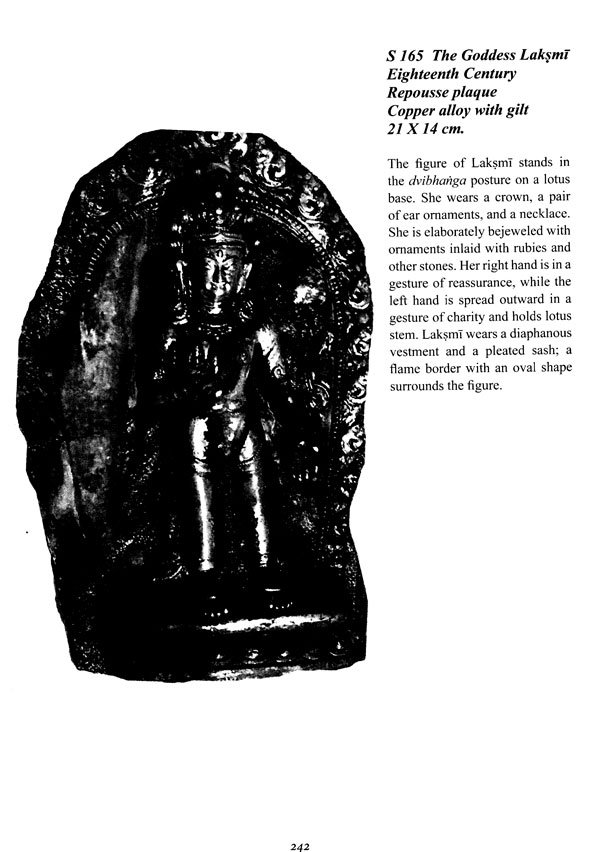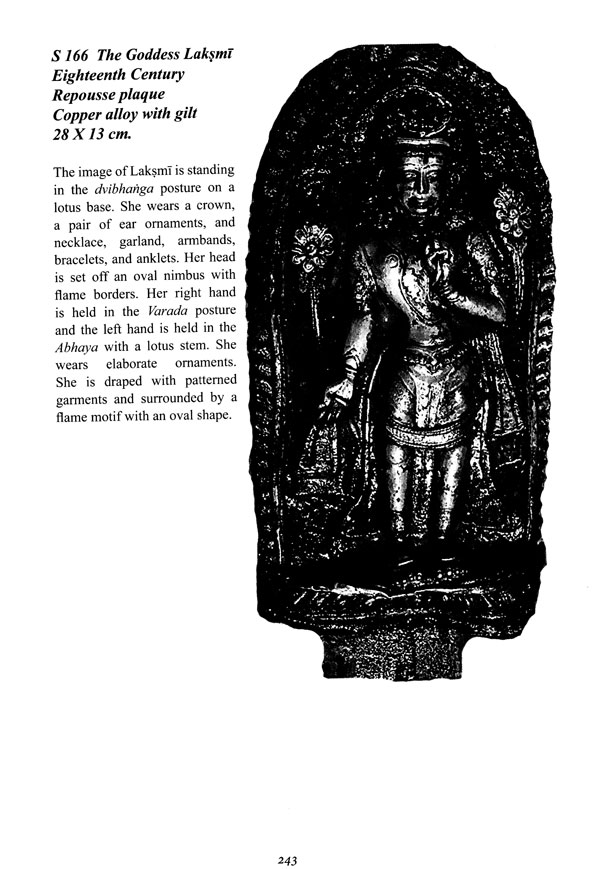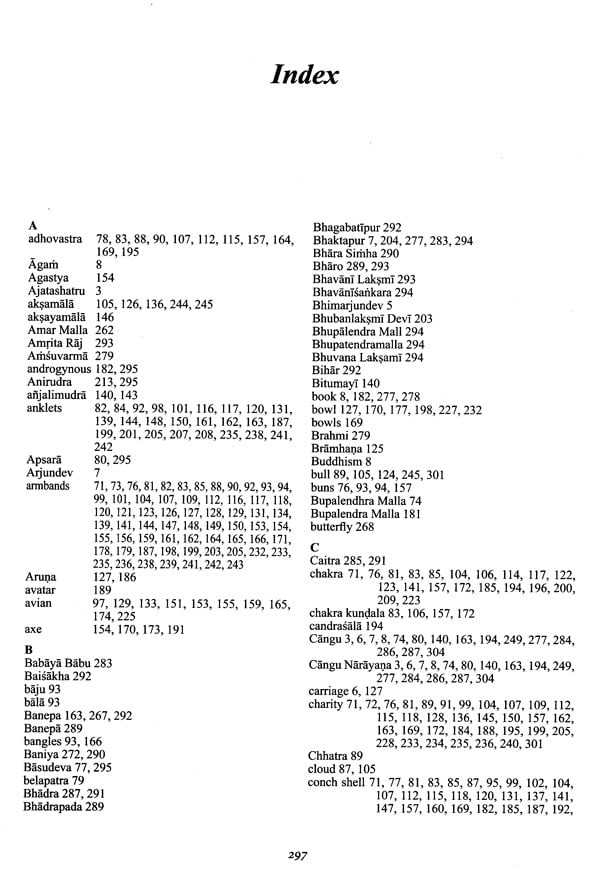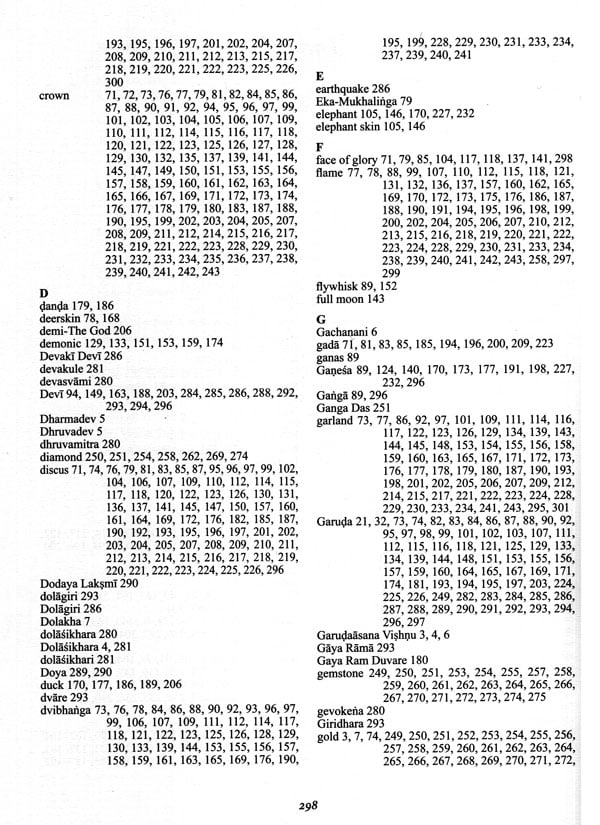
Ancient Bronzes of Nepal
Book Specification
| Item Code: | NAW337 |
| Author: | Mohan Prasad Khanal |
| Publisher: | Vidyarthi Pustak Bhandar, Kathamandu |
| Language: | English |
| Edition: | 2018 |
| ISBN: | 9789937715300 |
| Pages: | 317 (65 Color and 207 B/W Illustrations) |
| Cover: | PAPERBACK |
| Other Details | 11.00 X 8.50 inch |
| Weight | 1.02 kg |
Book Description
The Change Narayan temple, located in the Bhaktaput district in Kathmandu valley, is the oldest Hindu temple of Nepal and it is famous for housing some of the most exclusive sculptural arts from Nepalese history. Its importance is reflected in the fact that the UNESCO has listed it as the number one world heritage site in Nepal. Royal families dating back to the second century A.D. offered these sacred objects to the God Garudasana Vishnu, who is worshipped at the temple, and the objects were subsequently stored in securely sealed packages in the temple, storage area. Due to the priceless nature of the sculptures, jewelry and other artifacts, the storage area has been sealed from the public for centuries and access is given exclusively to the priests and attendants of the temple. However, to my knowledge, the packages were never before opened until 1979 when I was granted privileged accesses to this area of the temple by His Majesty, Government of Nepal authorities to conduct research on the sculptural art and artifacts as well as the architectural remains of the temple. It took me about two years to study and compile the images of all of the stored artifacts, which are being presented for the first time in this iconographic book. There were 170 ancient bronzes and 27 precious jewelry pieces such as pendants and other ornaments, coins, weapons, and architectural remains which have been photographed and catalogued here. Along with this, 47 dated sculptures and ornaments were found, which are entirely new discoveries in Nepalese art history.
This book is very distinct in nature due to the copious amount of information it shares with scholars everywhere about the art of ancient Nepal. It allows scholars a glimpse of ancient Nepal from second century to the eighteenth century, a time period about which there is a dearth of knowledge. Needless to say, these hitherto undiscovered and unpublished artifacts have the potential to advance what we currently know about Nepalese ancient art. This book thoroughly analyzes each sculpture, jewelry, and architectural remains found in the Change Narayan temple. It provides insights into how the artifacts specifically connect to the Hindu faith and how they relate to Nepalese history from the second century to the eighteenth-century A.D.
The artifacts are remarkable not only because of their sheer number, but also because of the findings that can be accurately dated. Since these artifacts are the showcase of the impact of the Hindu religion on the people of Nepal, it is important to study them in the context of the religious, artistic, and historic traditions of Nepal.
Dating back to the ancient times, various bronzes have adorned the homes of ancient royalty, created strictly according to their taste. As the readers learn more about the history of sculptures from the ancient Nepal, their study also helps to gain a better understanding of the way people of that time conducted their lives. Since the knowledge of ancient Nepal is rather scarce outside the narrow circle of Nepal experts, the book provides a brief yet comprehensive account of the ancient Nepal including the names of the kings who ruled in different time- periods.
The "Historical Background," provides a summary of the history of Nepal so that the reader is able to understand the different periods of Nepalese history better, in the backdrop of which the styles and forms of these sculptural arts took shape.
These sculptures depict the Gods and Goddesses from the Hindu mythology as well as images of donors from the family of royalty and common people. The bronzes are depicted in a multitude of poses, which carry a deeper meaning in Vaisnavism. Additionally, the figures in these sculptures carry emblems which, when analyzed, can help the reader understand the true significance of the sculpture in question. Detached pillars of temple architecture are other artifacts described in the book. The bronzes are done with a great degree of sophistication and detail that distinguish them prominently. This knowledge will give a valuable insight to scholars and students of sculptural art.
**Contents and Sample Pages**
